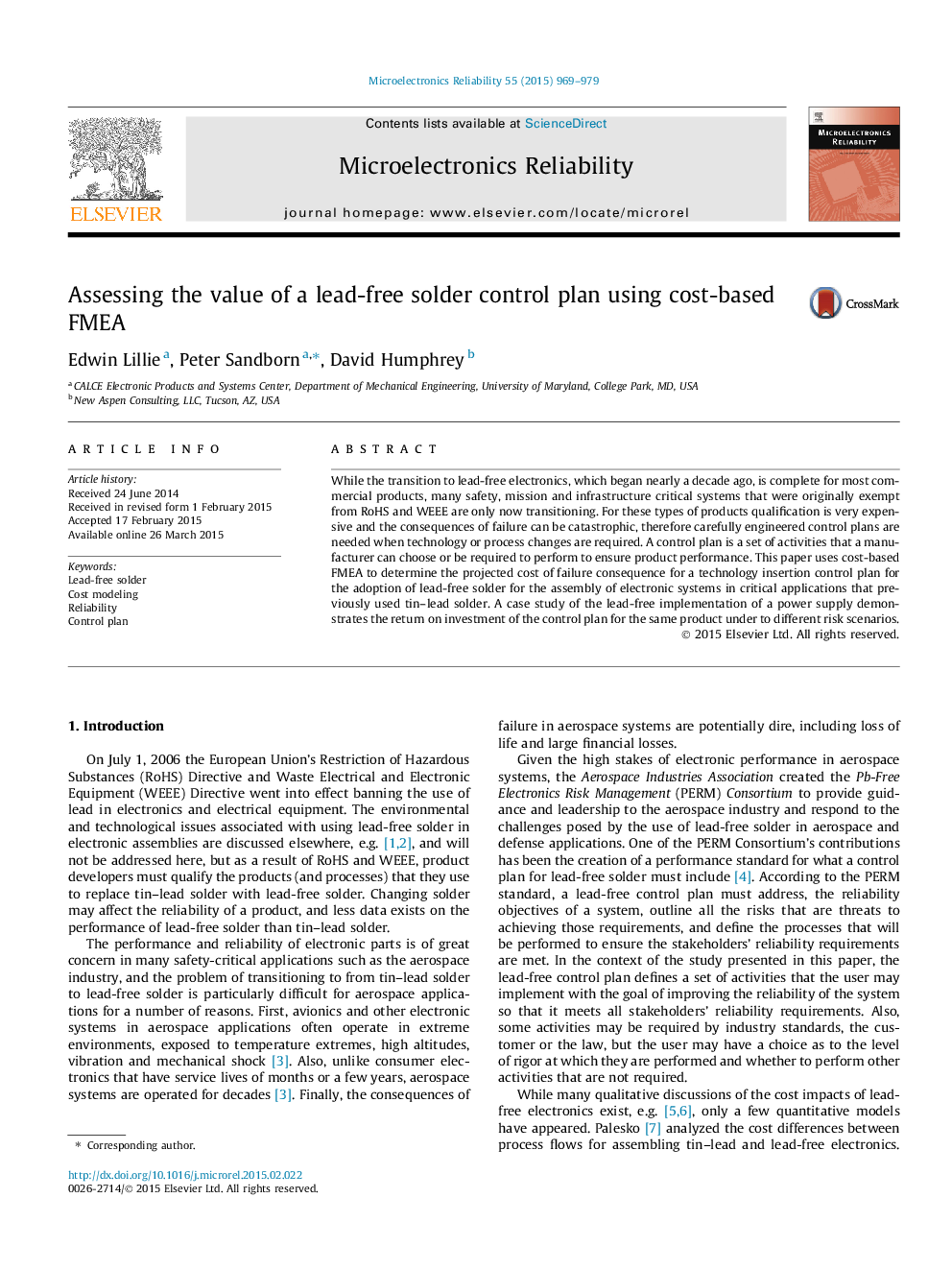| Article ID | Journal | Published Year | Pages | File Type |
|---|---|---|---|---|
| 548988 | Microelectronics Reliability | 2015 | 11 Pages |
•For many systems, qualification is expensive and the consequences of failure can be catastrophic.•Carefully engineered control plans are needed when technology or process changes are required.•Control plans are activities that may be performed to ensure product performance.•Used cost-based FMEA to determine the projected cost of failure consequence for a control plan.•We included a case study of the lead-free implementation of a power supply.
While the transition to lead-free electronics, which began nearly a decade ago, is complete for most commercial products, many safety, mission and infrastructure critical systems that were originally exempt from RoHS and WEEE are only now transitioning. For these types of products qualification is very expensive and the consequences of failure can be catastrophic, therefore carefully engineered control plans are needed when technology or process changes are required. A control plan is a set of activities that a manufacturer can choose or be required to perform to ensure product performance. This paper uses cost-based FMEA to determine the projected cost of failure consequence for a technology insertion control plan for the adoption of lead-free solder for the assembly of electronic systems in critical applications that previously used tin–lead solder. A case study of the lead-free implementation of a power supply demonstrates the return on investment of the control plan for the same product under to different risk scenarios.
